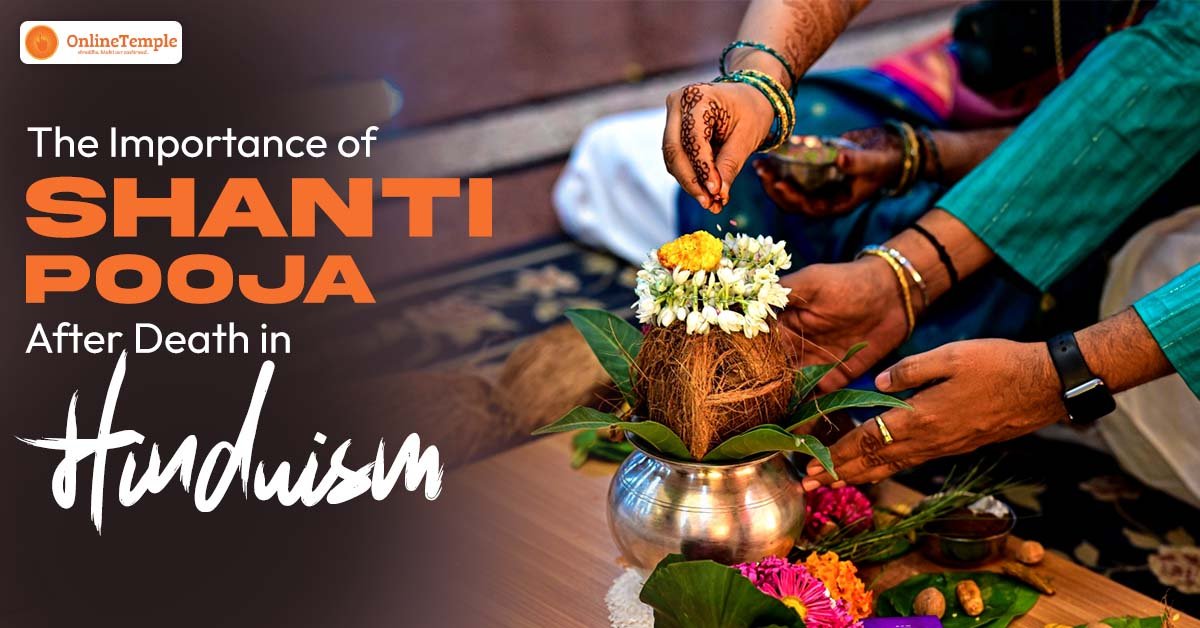After death, people receive salvation or embark on a new journey. The Vedic mantras of the Shanti path help the departed soul achieve:
- Peace
- Sadgati
- Moksha.
So, it is critical to perform a Shanti path for someone who has left this materialistic world. Hindu Online Puja Services are also available if you’d like to arrange a pooja for your loved one. This pooja should be performed by close family members so that the departed soul can break free from the cycle of birth and death. This liberation is referred to as Moksha. The Last Journey organization organizes everything needed for the Shanti path. This pooja assists people in releasing the souls of their loved ones.
Importance of Conducting Shanti Pooja after the Death
The rich manuals known as Purana in Hinduism explain why the Shanti path is important after a person’s death. The Agni Puran, Garuda Puran, and Matsya Puran all mention the reason for its importance. It states that when a person lives in this materialistic world, he or she becomes deeply connected to the never-ending desire. So, a Shanti pooja or path is performed to break all those desires and completely free the soul from this materialistic world.
The ideal time to perform the shanti path for the departed soul is between the third and eleventh days after the deceased’s cremation or burial. On the first day of the shanti path, the priest or pandit Ji chants Vedic mantras and jap. This process continues for a few days before the family members donate items for the departed soul’s peace on the last day of shanti pooja. These donations include:
- Pind Daan
- Gaudaan
Essential Rituals for Shanti Path
As previously stated, the necessary items must be completely intact and sacred before being used in this pooja. Here is a list that can help you get a sense of the Shanti path samagri.
- Cow dung
- Aam lakadi
- Pandit
- Kalash
- White and yellow Cloth
- Flowers
Last Journey maintains its credibility by providing all these pooja samagri in sacred form. You can rely on the team members without any doubt for the best services. Meanwhile, you can evoke the moments that you have spent with the deceased person.
Shanti Path Rituals
Shanti path or moksha Prapti pooja takes a long time if it is done properly. It begins with several Vedic mantras and concludes with several daan (donations) based on the wishes of family members. You can see all of the rituals that should be performed by an experienced priest or Pandit Ji in a step-by-step manner.
- Kalash Sthapana
- Pind Daan
- Gauri Ganesh Poojan
- Vishnu Sahastranaam- 51 path
- Garuda Purana Path
- Dwadash Akshar Mantra Jaap- 11000 chants
Bonus Tip: you can also discover pandits for puja online at an online temple and engage in various rituals to bring new perspectives and meaning to your life. As we were discussing, the last day of the shanti path ends with feeding:
- Cow
- Dog
- Crow
- Brahman.
On the final day, family members distribute daily necessities to the people in the form of daan. The last journey team members assist the people in completing all tasks using their professional skills and experience.
Conducting Shanti Pooja Benefits
Shanti Pooja aids in the liberation of the deceased soul from the arduous cycle of birth and death. It assists the soul in breaking previous familial bonds, allowing it to feel free or liberated. The shanti path also assists family members in receiving blessings from the departed souls. It is believed that when the soul is free of all bonds, it bestows blessings upon those who perform this pooja. It bestows blessings on them, including:
- Success
- Good Health
- Prosperity
- Happiness
- Mental Peace
Finally, you can Book Online Hindu Puja Services through the online temple for your
- Puja Ritual
- Proper mantra chanting
- Divine blessing and many more.

